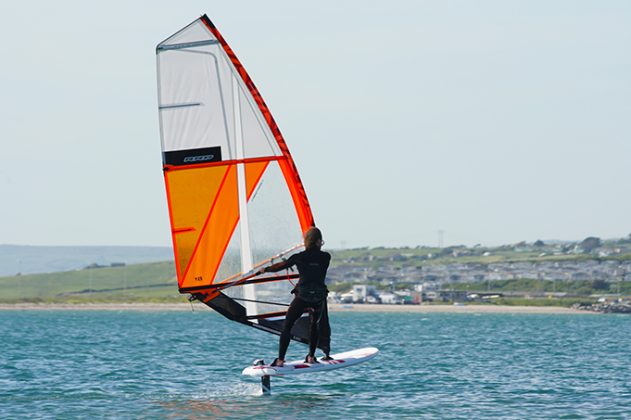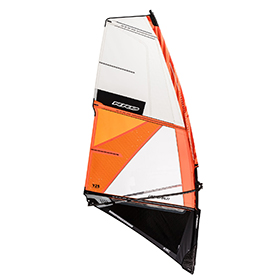
RRD COMPACT FREEFOIL MKI 5.8M 2019 TEST REVIEW
RRD COMPACT FREEFOIL MKI 5.8M 2019 TEST REVIEW
THEY SAY
With the Compact Freefoil we have exactly the same performance as the Freefoil, but with a sail and rig that fits in a backpack. Windsurfing has never been so compact. A board length of 180, a complete rig that fits in a backpack and the foil… The whole package fits into the back of a car with ease!
WE SAY
RRD’s sail designer John Skye has been working intently on his ‘Compact’ sail concept for several years now, and this is the first time we have been lucky enough to use one within our test schedule. The idea is simple – to produce a complete rig that fits inside a travel case, so that windsurfers are no longer restricted by the factors beyond their control, be it the car they drive or airline they’re flying with. Two-piece battens and four or five piece booms and masts are just the start; there’s now a fold-down sail to match every discipline, from wave to freeride and freerace … there’s even a performance ‘Grom’ sail for the aspiring youth. So it was only natural that the new Freefoil sail should also be made available in compact form!
On first rigging it took a little while to ensure the battens were correctly fitted, but with practice, we’re sure we can get it down to the 5 minute rigging time quoted by RRD. Once on the water, the Freefoil feels very neutral and easy in the hands, with both clew eyelets promoting plenty of rake to the boom’s orientation. The extra joints in the mast and boom have obviously added weight to the respective component parts, but these aren’t especially noticeable at rest and certainly not once powered. As wind fills the sail, the Dacron luff panel and large distance between battens two and three means the sail breathes easily into a much deeper profile. A few pumps and the Freefoil generates lots of positive forward surges, the reduced luff curve and tight leech helping to make use of the whole sail area. Settling easily into an upright and relaxed stance, the boom rake and cross batten design provides form and structure low down, so as to not upset the rider’s stance. Even in powered to overpowered conditions, the Freefoil remains manageable, allowing the rider to ease it out and let it go neutral. We did downhaul the sail more to see what would happen and it opens the upper leech up slightly, but more importantly tightens up the luff panel and strengthens the sail’s stability low down. It is not a sail for loading and trying to drag race your mates with, but rather a soft user-friendly power source for getting going early. It partnered the Pocket Rocket (tested elsewhere in this issue) superbly, giving the initial energy to push the board forward and get water flowing over the foil’s wings, before contracting to trim to the head-on apparent wind. In transition, the Freefoil returns to its default neutral feeling, allowing the rider to concentrate on their ride height and foil control upon exit. The lower battens retain rotation around the mast, but easily shift round onto the new tack with a well-timed pump. A unique sail offering a massive practical upside, the Compact Freefoil performs admirably and could well be the answer to enjoying a fun filled session on the water, when you’d otherwise be stuck on the beach.
Other sails in this test:

